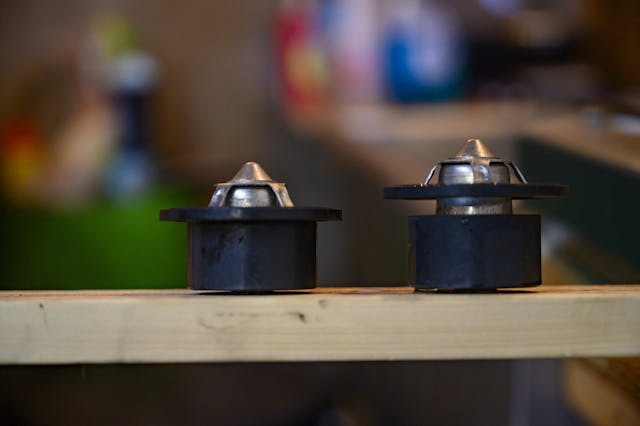Wrenchin’ Wednesday: Don’t touch the thermostat … again!
Thermostats are one of the most misunderstood parts of a car, yet they’re also vital for regulating your vehicle’s temperature across a range of operation conditions. Their primary role is to bypass the radiator when the coolant is cold, thereby retaining heat when below operating temp, before opening up to flow hot coolant through the radiator once the operating temp has been reached. Contrary to popular belief, throwing in a cooler thermostat will not solve overheating problems—the vehicle will still hit the peak temperature it wants to hit while running hot—but the baseline temp of the operating range will be lower under light loads, which can have its benefits.
Given their relatively hard-to-reach placement inside of thermostat housings, assuredly leaking coolant or needing an additional gasket to replace, replacing the thermostat is one of those jobs that people really regret having to do twice, and one of the key ways to save yourself the double jeopardy is to test your new thermostats before tossing them into the vehicle. Especially for some engine applications, QC with off-the-shelf thermostats can be suspect at best, and it’s worth double checking their operation before install.
All you’ll need is a pot full of water and a kitchen thermometer, as we’ll be tricking the thermostat into action and measuring its activation temperature. We can easily recreate the water temps of a cooling system on our stove to see exactly when it begins to open, ensuring that there won’t be a need to rip them back out after install.

Start the thermostat with room-temp water over medium heat. You don’t want to blast this science experiment at full-power; you may end up damaging the rubber gaskets with the direct heat at the bottom of the pan. Inside of conventional thermostats is a wax-filled cylinder that reacts to changes in coolant temperature. As that wax heats up near the thermostat’s set operating temperature, it melts, which expands its volume inside of the body of the thermostat, pushing it outward and opening the plate that seals the thermostat while cold. Of course, once that wax cools, it shrinks back down to its original volume, pulling the thermostat closed again and sealing coolant flow away from the radiator.

We want to see the the thermostat open within about five degrees of its set temperature on the box, acknowledging that the wax piston moves slowly so that it will actuate smoothly as the coolant temp swings across its operating range. If you’re lucky, like me, and your machine uses a dual thermostat setup, you’ll also want to ensure both are calibrated equally by watching for them to open at about the same temp, ideally within 5–10 degrees of each other at max—and if you’re installing an aftermarket thermostat with a different temp setting than stock, this is a great time to double check that the clerk didn’t mix up parts.


